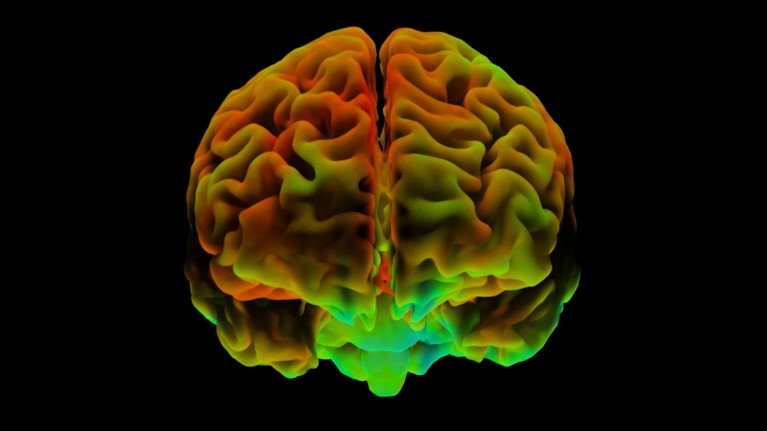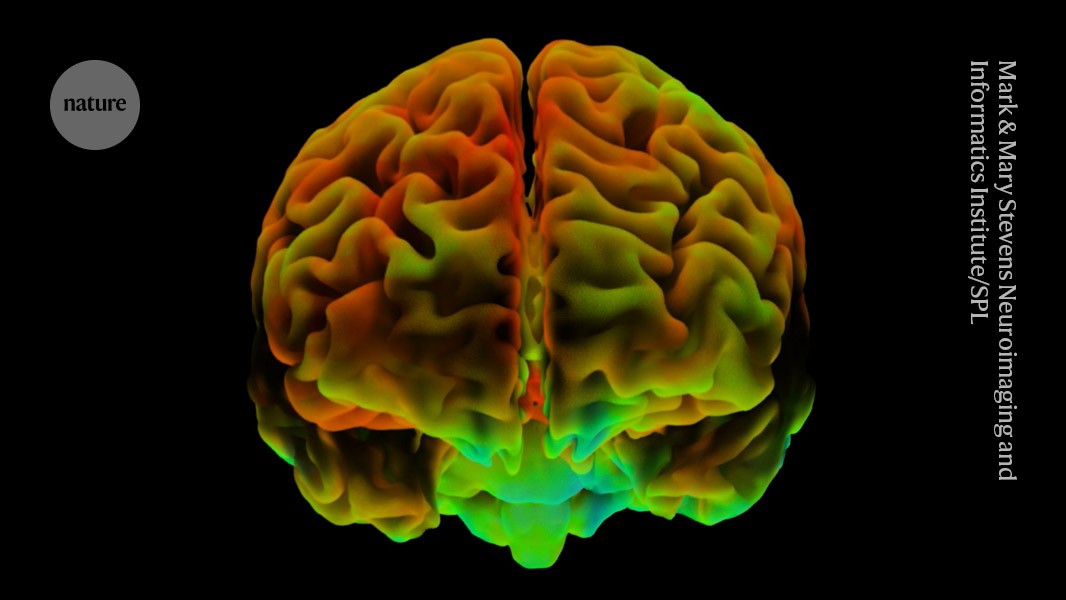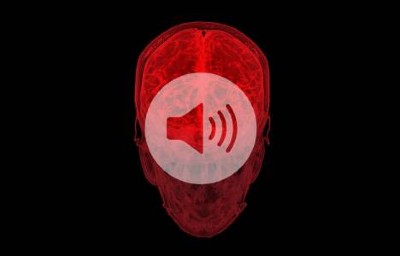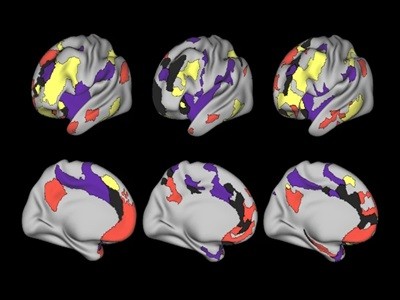
A healthy brain (fMRI image). Researchers are investigating the effects of stimulating regions of the brain linked to depression.
Credit: Mark & Mary Stevens Neuroimaging and Informatics Institute/Science Photo Library
A remote clinical trial involving more than 150 people has shown that an experimental treatment for depression — which uses a swimming-cap-like device to gently stimulate the brain — can be effective when carried out at home.
The non-invasive therapy, known as transcranial direct current stimulation (tDCS), is designed to stimulate areas of the brain linked to mood regulation, and delivers a painless, weak electrical current to through electrodes placed on the scalp. It could be a game-changer for the more than one-third of people with depression who do not respond to standard treatments such as antidepressants or psychotherapy.
How deep brain stimulation is helping people with severe depression
The trial, described on 21 October in
Nature Medicine
1
, found that after ten weeks of regular treatment, participants who received tDCS showed a greater reduction in depressive symptoms than did those in a control group. Previous research has explored using tDCS to treat depression, but this study stands out for its long timescale and remote, home-based design, which did not require participants to make daily visits to a specialized clinic.
“When we think about that aspect of barriers to mental health, accessibility is a huge one,” says Shawn McClintock, a clinical neuropsychologist at UT Southwestern Medical Center in Dallas, Texas, who was not involved in the study. The trial “really starts to substantiate the ability to take mental health treatments into a home setting”, he adds.
Making brain cells fire
In the trial, researchers targeted the dorsolateral prefrontal cortex, a region of the brain involved in decision-making that is often less active in people with depression. “The tDCS involves a small current that makes it easier for the brain cells to discharge or to fire,” says study co-author Cynthia Fu, a clinical neuroscientist at King’s College London.
Fu and her colleagues trained 120 women and 54 men, all of whom had been diagnosed with a major depressive disorder, to use the tDCS headset and randomly allocated people to either the treatment or a control group.
Found: a brain-wiring pattern linked to depression
Those in the treatment group received a current of 2 milliamperes to the scalp — about 0.5% of the amount drawn by a 100-watt light bulb — for 30 minutes, 5 times a week for the first 3 weeks, then 3 times a week for 7 weeks. Participants in the control group wore a sham headset, which only delivered a brief pulse of current at the start of each session, mimicking the feeling of real tDCS without providing the same stimulation.
After 10 weeks, the treatment group’s scores on a scale that measures depression symptoms dropped by 9.41 points, whereas the control group’s score decreased by 7.14 points. Nearly 45% of participants with the active tDCS device experienced reduction in or recovery from their symptoms, compared with almost 22% of those with sham device. The headsets were used in addition to other treatments — many of the study participants took antidepressants and enrolled in psychotherapy for at least six weeks prior to the study.
Mixed results
Although these results are encouraging, previous research has suggested that tDCS doesn’t work for everyone. Last year, for example, a study of 150 people found that tDCS did not have antidepressant effects
2
. But trials with positive and negative outcomes are both equally important to investigate the method’s potential as a treatment for depression, says Frank Padberg, a psychiatrist at Ludwig Maximilian University in Munich, Germany. The next step should be to understand why tDCS works for some people but not others, and to look for ways to personalize the treatment, he adds. “Different people need different dosages.”
Future studies could also use brain imaging and electrical recording to observe changes in neural circuits during tDCS treatment in real time, says McClintock. This would help researchers to “see what this treatment is actually doing at the neural circuit level”.
“Three decades ago, I wouldn’t have thought that this stimulation does anything on the brain,” says Padberg. But now it is known that tDCS impacts brain activity, “I’m pretty sure that an optimized method will make it to clinical care one day”.




